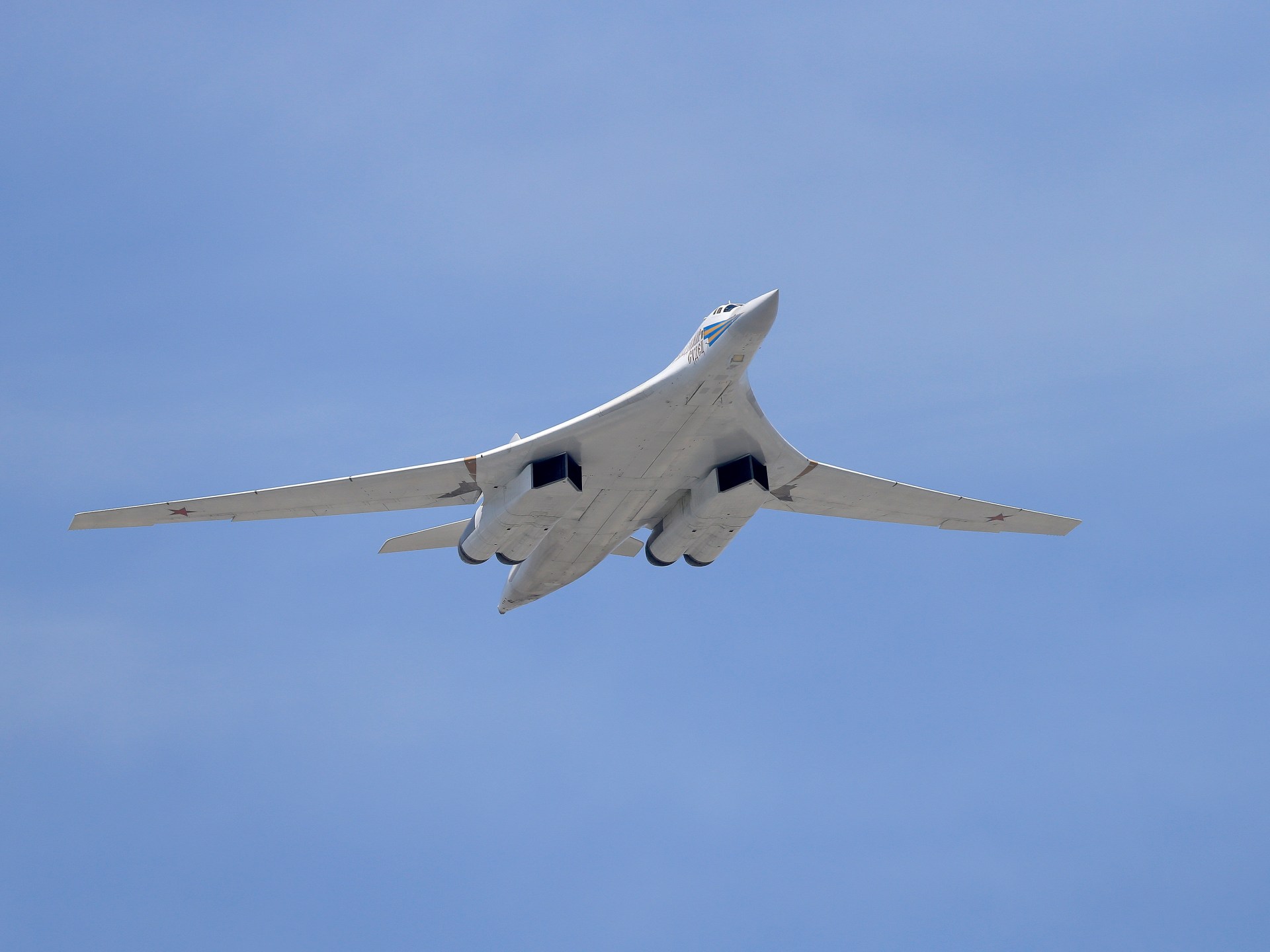Russian President Vladimir Putin announced a few days ago, before the defense leaders in Moscow, that his country will raise the combat readiness of its "nuclear triad", after he warned before that of the growing danger of a nuclear war in the context of tension between Russia and the West over the war in Ukraine.
Putin pledged to develop hypersonic weapons "unmatched in the world" as part of a plan to strengthen strategic weapons, noting in this context that two models of missiles, "Sarmat" (which is called Satan 2) and "Zircon", will enter service soon.
Before that, the Russian president confirmed that Moscow might add to its military doctrine the possibility of directing the first preventive nuclear strike to disarm its opponent.
The nuclear triad is a term that refers to 3 means of launching that most nuclear powers possess, through which nuclear strikes, whether preemptive or in response to an attack, can be launched from land, sea and air, specifically by ballistic missiles, submarines and bombers.
Russia's nuclear arsenal
According to Western reports, Russia, which inherited its nuclear arsenal from the Soviet Union, possesses 5,977 nuclear weapons, some strategic and some tactical, including about 2,000 tactical nuclear weapons, according to US intelligence.
According to the US Center for Arms Control and Non-Proliferation, 1,588 Russian nuclear weapons are currently in proliferative mode.
The strategic nuclear warhead includes an explosive payload ranging from 500 to 800 kilotons, and its range is longer than the tactical one, whose explosive payload ranges between 10 and 100 kilotons. Each kiloton equals one thousand tons of explosive TNT.
Russia surpasses the United States by about 500 nuclear warheads, and the two countries possess 90% of all nuclear weapons in the world.
In 2019, a study by Princeton University, which was covered by the anti-nuclear organization ICAN, predicted that in the event of a nuclear war between Russia and America, 34 million people would be killed and 57 million injured in the first hours of the confrontation.
What is this nuclear triad that Putin pledged to develop within what he described as a policy of maintaining the balance of nuclear deterrence as a basis for stability in the world?
The following are the elements of the Russian nuclear triad, according to a report by the US Center for Nuclear Nonproliferation.
Air Nuclear Force
Russia has in its air nuclear fleet about 68 heavy, long-range, hypersonic bombers, including several versions developed by Tupolev, including the Tu-160 Blackjack and the Tu-85MS. (Bear H) (Tu-85MS), the second class making up most of the fleet.
One bomber can carry up to 16 Soviet-made HK-55 missiles, and all of these launchers can carry 700 nuclear warheads.
Russia is working to modernize its air nuclear force by introducing nuclear cruise missiles launched from bombers.
The nuclear submarine "K-266 Orel" in the Russian port of Kunstadt (Reuters)
Naval nuclear force
The Russian Navy's nuclear force includes 11 nuclear submarines designed to launch ballistic missiles that can be equipped with nuclear warheads.
Active submarines such as the Bulava SS-N-32, each of which can carry 16 ballistic missiles, and in total are capable of carrying 624 nuclear warheads.
- Last July, the Russian Navy received the "Belgorod Kay-329" submarine, which is the largest nuclear submarine built in 30 years, according to the US Naval Institute.
Russian sources attribute to this submarine massive destructive nuclear capabilities, including the generation of tsunami radiation waves more than half a kilometer high.
Another 10 Boreii submarines are being modernized, and their development is expected to be completed in 2027, but the process is facing a shortage of resources.
Russia has another 26 nuclear-powered submarines that can strike with different types of conventional cruise missiles.
missile nuclear force
- It is believed that Russia has 306 intercontinental missiles that can carry up to 1185 nuclear warheads, and are capable of hitting far places, including US territory.
Among the most prominent of these missiles are Topol-M, which has a range of 11,000 km, and Yars, which has a range of 12,000 km, both of which are capable of carrying several nuclear warheads.
Russia is currently developing hypersonic missiles that can carry nuclear warheads such as Sarmat and Avangard, and Russian officials say some of them cannot be intercepted.
- Some estimates say that the Sarmat missile may have a range of 35,000 km, and earlier this year the Russian army conducted a test on this missile, and Russian media said that it flew about 6,000 km inside Russia before hitting the specified target.
Russia has two missile systems that can carry tactical nuclear warheads. The first is the "Caliber", which is launched from submarines and warships and hits targets on land and sea, with a range of 1,500 to 2,500 kilometers. The second is "Iskander" and is launched from the ground. Its targets are also ground. Its range ranges between 400 and 500 km.
Tactical nuclear weapons are used to strike a target in a defined area, while striving to avoid the widespread spread of nuclear radiation.

